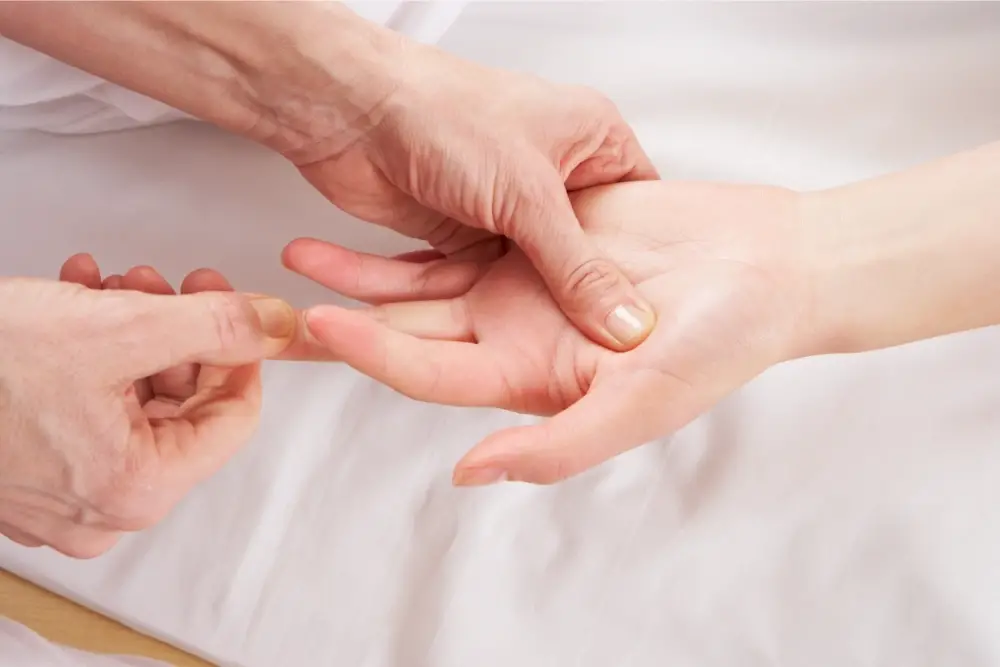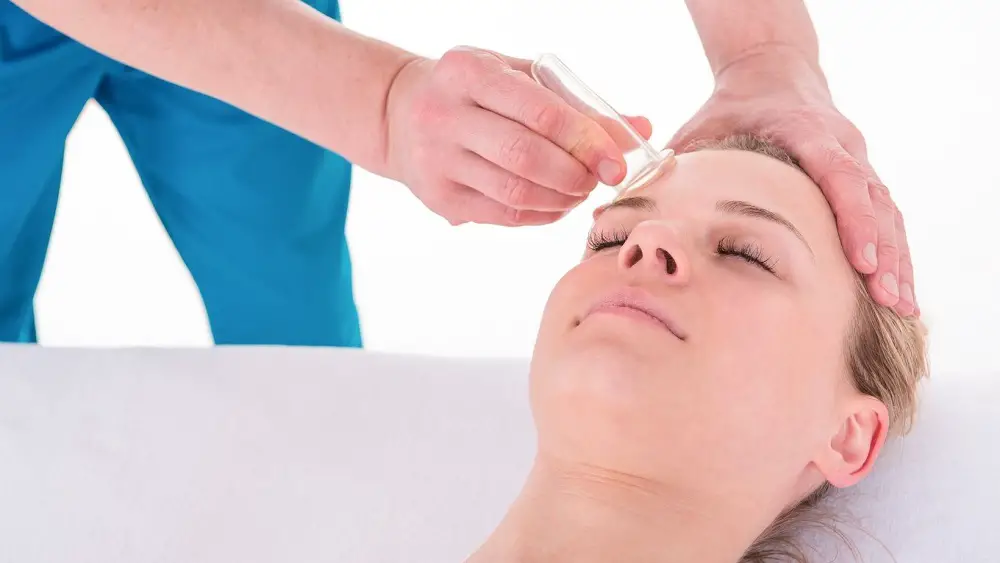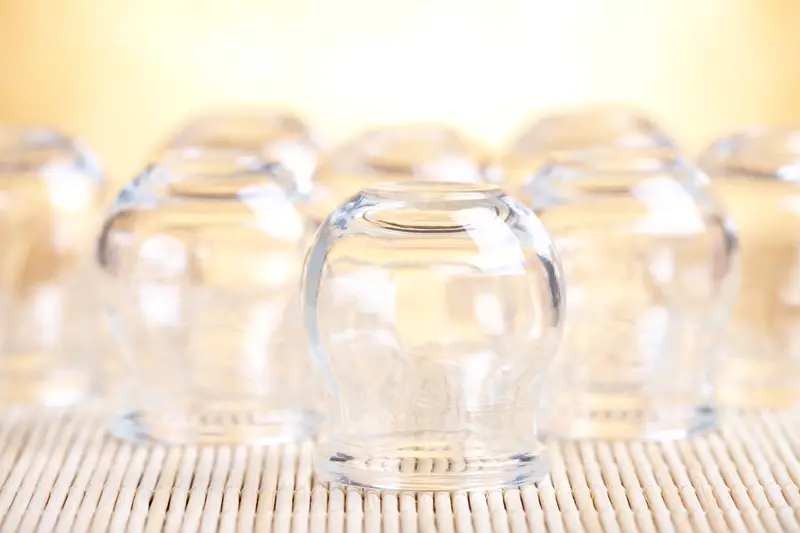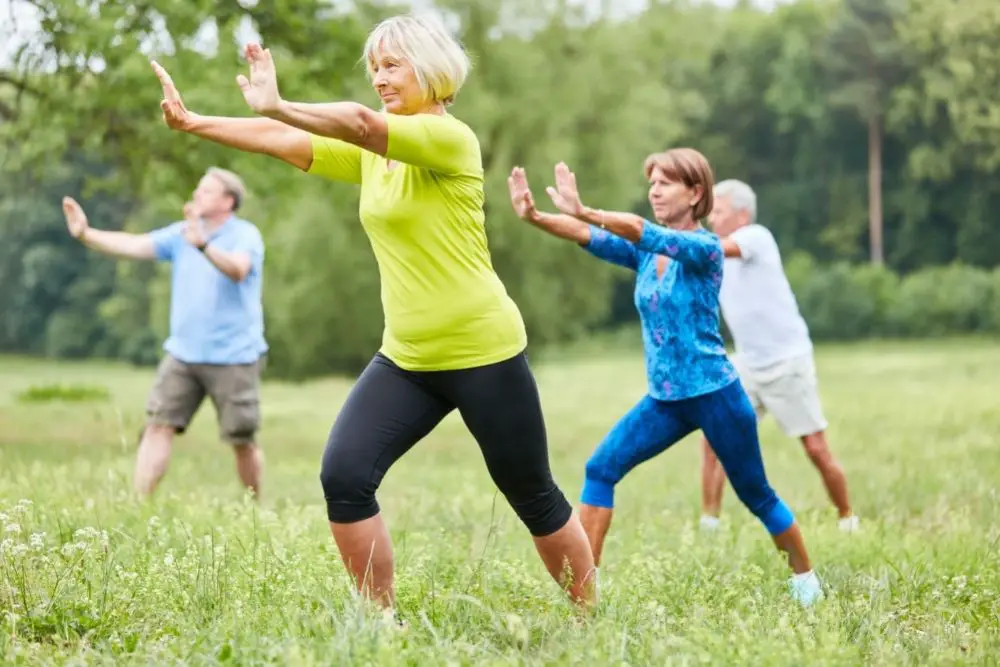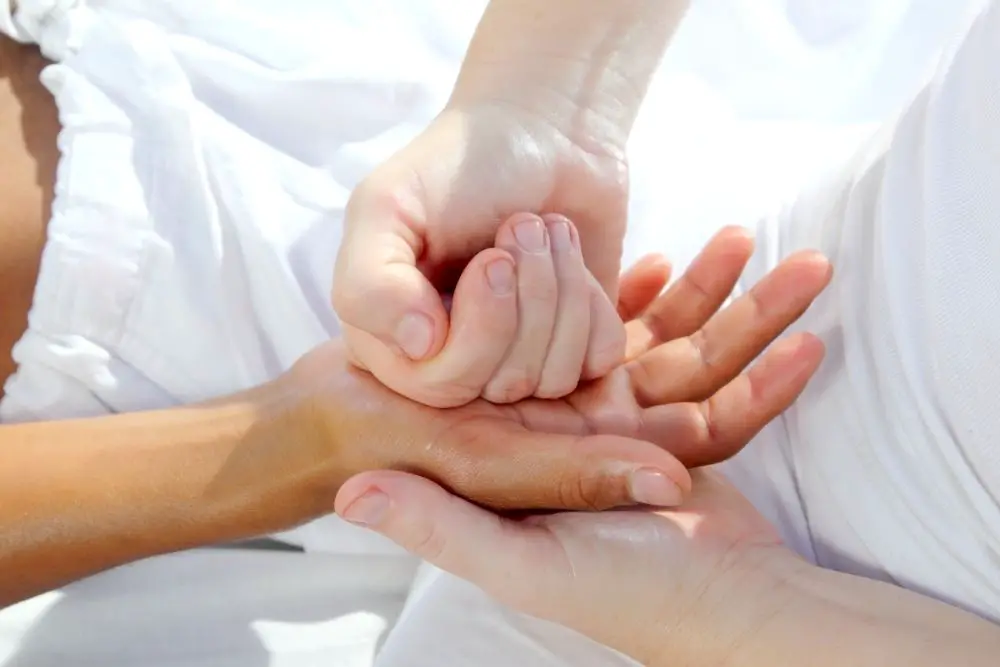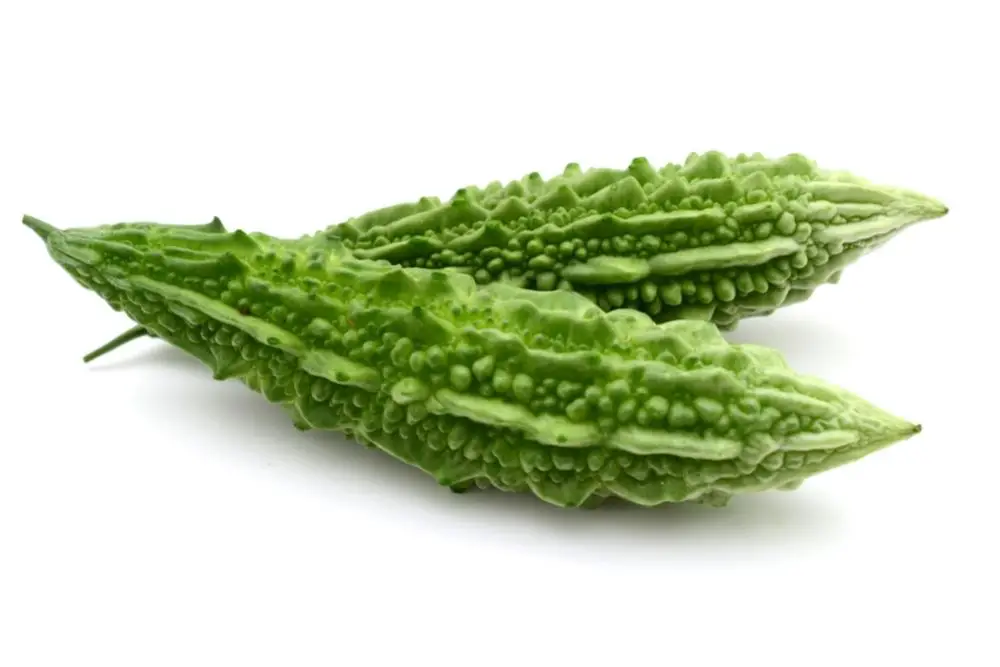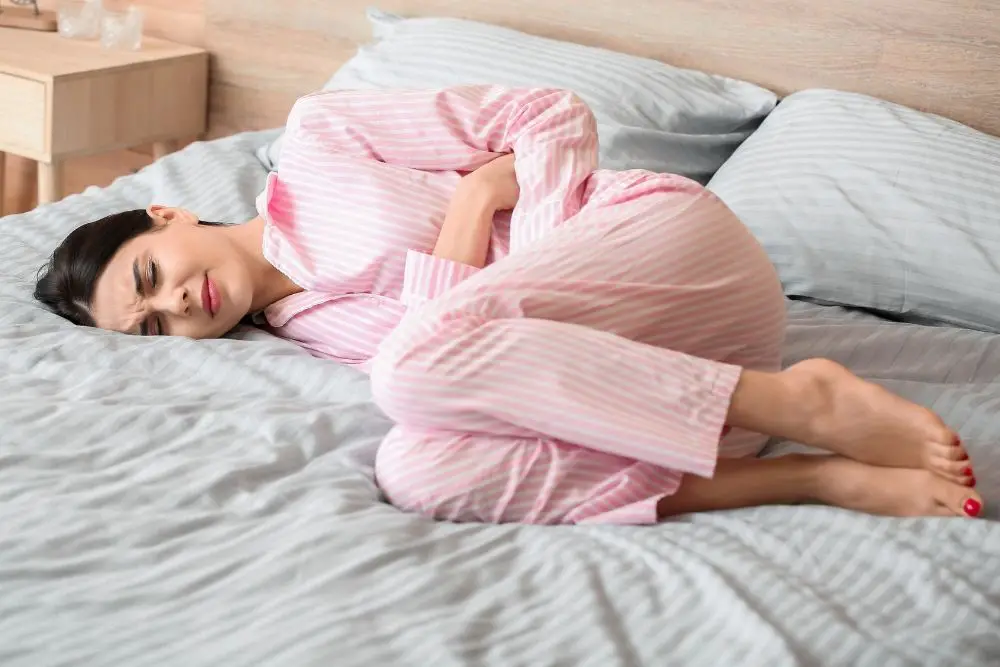Hand reflexology is an ancient Chinese medical practice that is similar to Shiatsu massage. The idea behind reflexology stems from the sense of Qi, an unseen life force that flows through your body.
There are specific areas of the body that Qi travels through, and it is believed that pressure on certain points can help facilitate the flow. These areas are known as energy channels and meridians and can be very useful in boosting your overall health.
Massaging specific areas are believed to remove any blockages and allow your Qi to flow freely around your body once more.
Below is a chart to show the different regions of the hands and the areas of the body that they correspond to.
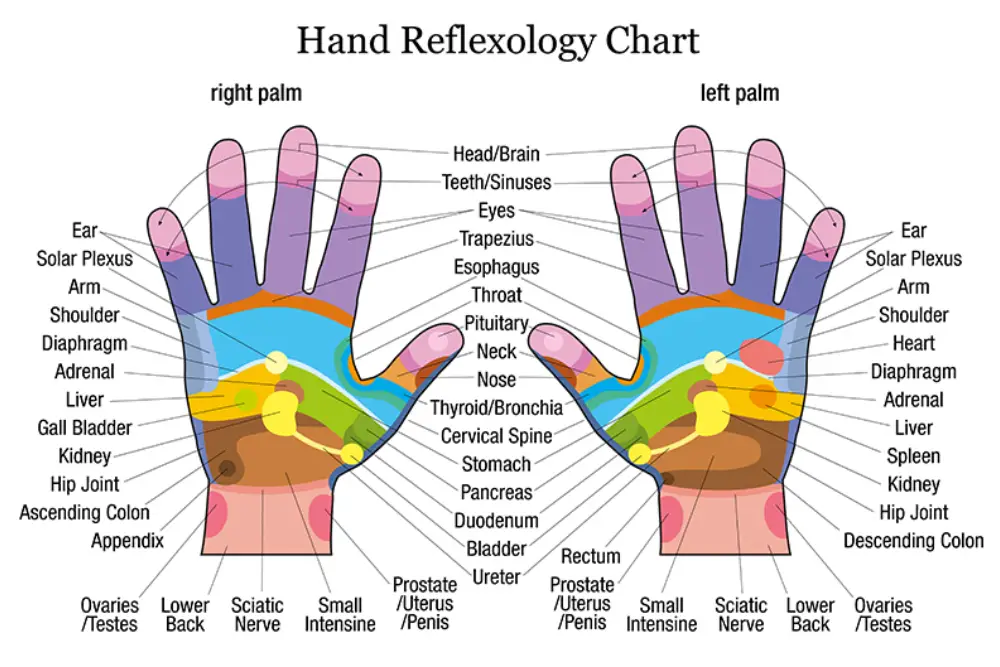
Hand Reflexology Chart Explained
The tips of each finger (and thumb) from the very top to the first knuckle corresponds to the sinuses, brain, and heads. The central area of your fingertip pads is linked to the pineal, hypothalamus, and pituitary glands. These are found in the center of your brain and are believed to help alleviate insomnia and other sleep disorders.
The area between the first and second knuckles on your fingers is linked to your neck.
The area between the second and third knuckles on your fingers are linked to your eyes and ears. The index and middle fingers are associated with the eyes, and the ring and pinky fingers are associated with the ears. The area at the base of your thumb, aligned with the webbing, is linked to the throat.
The knuckles underneath your fingers, at the top of the palm, are linked to the upper chest. This includes the chest, breast, lung, and bronchial areas. You should massage these from the palm side of your hand, rather than the back.
Draw a line down the center of your palm, starting just underneath your middle finger. This will travel through 4 dime-sized regions on your hand, each associated with a different bodily area. In descending order, they represent the solar plexus, adrenal glands, kidneys, and intestines.
Return your attention to the area near the webbing of your thumb. Move down to the base of your palm in this region in a smooth motion. This again passes through 4 separate regions – thyroid gland, pancreas, bladder, and uterus or prostate.
The external ridge of this area is associated with the spinal column, along the sides of the thumbs reaching down to the wrist. The cervical spine region is closest to the thumb. In descending order, it then goes through the thoracic, lumbar, and sacral regions.
Go back to your palms. Picture a line running from the tip of your pinky finger to the base of your wrist. This again incorporates 3 separate regions, approximately nickel-like in size.
The top area is linked to the shoulders and arms. On the left hand, this will link to the left arm/shoulder and vice versa. The center zone of the left hand is linked to the heart and spleen.
On the right side, this corresponds to the liver and gallbladder. The base of these regions corresponds to the hip and thigh on the same side as the hand.
Look at your wrist, just underneath the base of your palm. Here there are 3 more reflexology zones. The area where your palm meets your wrist, directly in line with your middle finger, is linked to the lymph system.
Next to this, in line with your pinky finger, are the regions associated with the ovaries or testes. Underneath both of these regions, you will feel a long thin line. This is linked to the sciatic nerve.
What Can Be Treated With Hand Reflexology?
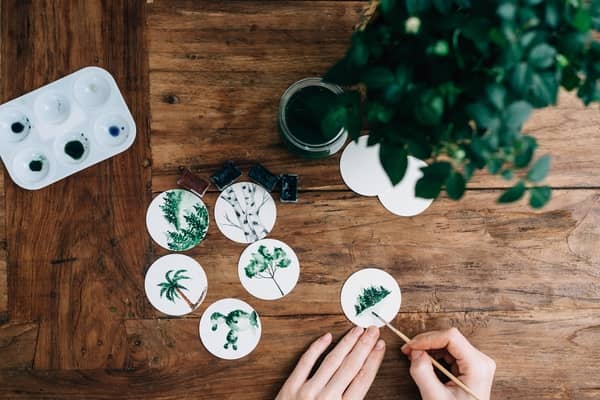
Hand reflexology is considered very useful when trying to boost circulation in your hands. This could be after an injury or due to a condition like Raynaud’s.
Arthritis and other joint mobility issues can be treated with hand reflexology. The massage increases the movement of your joints which is a real issue in elderly arthritis sufferers. This can also help to reduce the pain associated with these conditions.
Carpal tunnel syndrome and other repetitive strain injuries are often made a lot better with hand reflexology. This is a great skill to pick up if you spend a lot of time working on a computer.
Headaches, shoulder and back pain, and sports injuries are also known to respond well to hand reflexology treatments. Other conditions include sports injuries, chronic stress, menopause, IBS, sinus issues, and breathing problems.
Is Hand Reflexology Safe?
Yes, hand reflexology is safe and there is very little evidence to suggest that it can cause any adverse effects. It is not recommended for pregnant women to undergo acupressure or reflexology treatments. This is because there are certain pressure points that are known to trigger contractions which could prematurely induce labor.
If you are suffering from a hand injury, skin infection, inflammation, or open wounds, you should not undergo hand reflexology treatments. Gout, thyroid, and circulatory issues are not recommended for reflexology treatment either.
If you suffer from diarrhea, epilepsy, low platelet count, fevers, or infectious diseases, you should consult a doctor before undergoing reflexology treatment.
You should not stop taking medications or performing prescribed therapy in favor of reflexology without consulting a doctor first. Reflexology can have major health benefits, but these should be used to complement Western medicines rather than in place of. This will give you the optimal health benefits overall.
If nothing else, the massaging effects of reflexology will help to relax you and wash away stress and negativity. This can boost your immune system health.
How To Perform Hand Reflexology At Home

The first thing that you should do is coat your hands in a thin film of moisturizer. This is not necessary but it will make the process a lot easier and more comfortable. This is because the moisture allows your skin to glide more smoothly across your hands.
Using the thumb from one hand, rub in wide motions across the opposite palm. Start in the center and slowly work your way out to the edges.
You should then drag your thumb down in a smooth motion from each of your knuckles to your wrist. These should be long and straight movements with not too much pressure as this could lead to injury.
Wrap the entirety of your hand around one finger, as if you were a baby holding hands. Gently squeeze and twist your hand, allowing the joint to rotate a little. This is a similar motion to using a joystick on a video game.
Use your thumb and index finger to firmly pinch the tip of each finger. This wakes up the meridians in the hand. Look at the chart above to see which meridian each finger corresponds to, and be aware that the meridians differ.
You should then start at the base of each finger. Use the thumb of your opposite hand and rub in small, anti-clockwise circles all the way up each finger. Continue this until you reach the tip of each finger.
Make small circles with your thumb all over the palms and backs of your hands. Cover the entirety of your hands and then work your way down to your wrist too.
Whatever actions you perform on one hand, you must repeat on the other too. This is only important where the same regions correspond to the same function. For instance, if you are working the fingertips on your left hand, you must do the same on the right hand.
It is a good idea to drink a large glass of water following a hand reflexology session. The massage will increase the circulation in your body, making it expel toxins and lactic acid faster. Drinking water will help your body to flush this out faster.
If you suffer from arthritis or other painful conditions, it can be hard to apply adequate pressure to the reflexology regions of your body. If this is the case, you can purchase specific reflexology objects, however, these can be relatively expensive.
You can achieve the same result with standard household objects such as a hair roller or golf ball. If squeezing this hurts, roll the ball firmly under your hand. Reduce the pressure if you begin to feel any pain.
Reflexology Techniques

Thumb walking is a great reflexology technique. Fully stretch out your thumb and place it over the area that you want to target. Gently slide it backward as you flex the first knuckle up towards the sky. Continue to move this knuckle up and down as you move it forwards and back over the area you are targeting.
Another good way to stimulate these reflexology points is to press with firm and consistent pressure. As you do this, gently begin to rotate your thumb and steadily increase the pressure. Once you have done this, hold the point still for a count of 3. This should be done with a medium pressure to increase the relaxation that is felt.

Try our Anti-Aging Gua Sha Tool designed to bring out your skin’s natural glow.
Best Gua Sha Product- Anti-Aging: The tool is designed to target 11 specific aging signs such as wrinkles and sagging skin. By following the 7-step routine, users can improve skin firmness and reduce fine lines naturally.
- Enhances Skincare Routine: It works effectively with serums and lotions, boosting absorption and efficacy of skincare products.
- Visible Skin Improvement: Users can expect a smoother complexion, reduced puffiness, and a more youthful appearance.
 P. Sze
P. Sze 